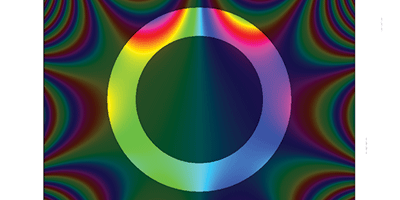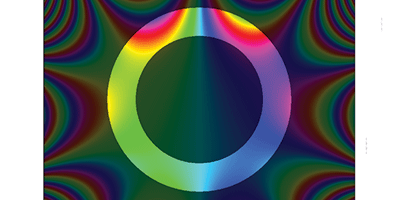Into the Vortex
For decades, electron microscope designers have sought precision, building better and better lenses to make electrons fly true from the source and hit dead on target. Now a research team has discovered that with a bit of lens hacking, aberrations in the focusing system of an electron microscope can be turned to good use. In a paper in Physical Review Letters, Laura Clark at the University of Antwerp, Belgium, and colleagues present experimental work showing that the lenses normally used to correct aberration can impart a twist to the electrons, creating what is known as a vortex beam.
Unlike the nice uniform wave fronts desired by designers of optical and electron microscopes, vortex beams have a spiraling wave front that rotates, like a corkscrew, around the beam axis as it propagates. Researchers have long investigated electromagnetic vortex beams of light and radio waves, which find applications in optical imaging and communications technology. Vortex electron beams are more recent, and most sources are not very intense. Clark et al. found that they could crank up the multipole electromagnets normally used to correct aberrations in a TEM electron beam to the point where the distortions took over and became a strong and nearly ideal vortex beam.
The method is simple—readjust the aberration correctors and insert an annular aperture into the focusing system to block nonvortex components. With further improvement, these helical-phase electron beams could allow researchers to probe the nanoscopic magnetic structure of materials or manipulate small particles with exquisite accuracy. – David Voss





